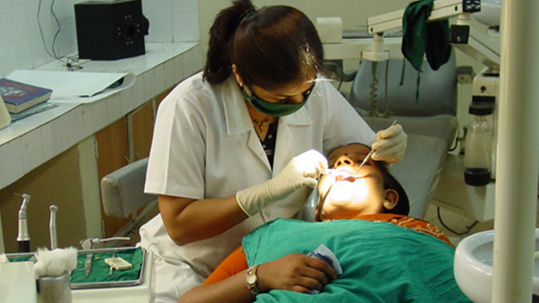- September 20, 2022
- GBH Staff Members
- Comment: 0
- Health Tips
ORAL AND DENTAL HYGIENE
Oral hygiene is the practice of keeping one’s mouth clean and free of disease and other problems (e.g. bad breath) by regular brushing of the teeth (dental hygiene) and cleaning between the teeth. Oral hygiene must be carried out regularly to enable the prevention of dental disease and bad breath. The most common types of dental diseases are tooth decay (cavities, dental caries) and gum diseases.
General guidelines for adults suggest brushing at least twice a day with fluoridated toothpaste: brushing the last thing at night and at least on one other occasion. Cleaning between the teeth is called interdental cleaning and is as important as tooth brushing. This is because a toothbrush cannot reach between the teeth and therefore only removes about 50% of plaque from the surface of the teeth. There are many tools to clean between the teeth, including floss, tape and interdental brushes; it is up to each individual to choose which tool they prefer to use.
TOOTH DECAY is the most common global disease. Over 80% of cavities occur inside fissures in teeth where brushing cannot reach food left trapped after eating and saliva and fluoride have no access to neutralize acid and remineralize demineralized teeth, unlike easy-to-clean parts of the tooth, where fewer cavities occur.
Teeth cleaning is the removal of dental plaque and tartar from teeth to prevent cavities, gingivitis, gum disease, and tooth decay. Severe gum disease causes at least one-third of adult tooth loss.
If plaque is left on a subgingival (under the gum) surface undisturbed, not only is there an increased risk of tooth decay, but it will also go on to irritate the gums and make them appear red and swollen. Some bleeding may be noticed during tooth brushing or flossing. These are the signs of inflammation which indicate poor gum health (gingivitis).
The longer that plaque stays on the tooth surface, the harder and more attached to the tooth it becomes. That is when it is referred to as CALCULUS and needs to be removed by a dental professional. If this is not treated, the inflammation will lead to bone loss and will eventually lead to the affected teeth becoming loose.
TOOTH BRUSHING- Routine tooth brushing is the principal method of preventing many oral diseases. Controlling plaque reduces the risk of the individual with plaque-associated diseases such as gingivitis, periodontitis, and caries – the three most common oral diseases. The average brushing time for individuals is between 30 seconds and just over 60 seconds. Many oral health care professionals agree that tooth brushing should be done for a minimum of two minutes, and be practised at least twice a day. Brushing for at least two minutes per session is optimal for preventing the most common oral diseases, and removes considerably more plaque than brushing for only 45 seconds. Brushing can be done manually as well as electric toothbrushes available in the market.
Foods that help muscles and bones also help teeth and gums. Vitamin C is necessary, for example, to prevent scurvy which manifests as serious gum disease.
Eating a balanced diet and limiting sugar intake can help prevent tooth decay and periodontal disease.
MOUTHWASHES- There are three commonly used kinds of mouthwash to reduce bad breath and maintain oral and dental hygiene: saline (salty water), essential oils (Listerine, etc.), and chlorhexidine gluconate.


